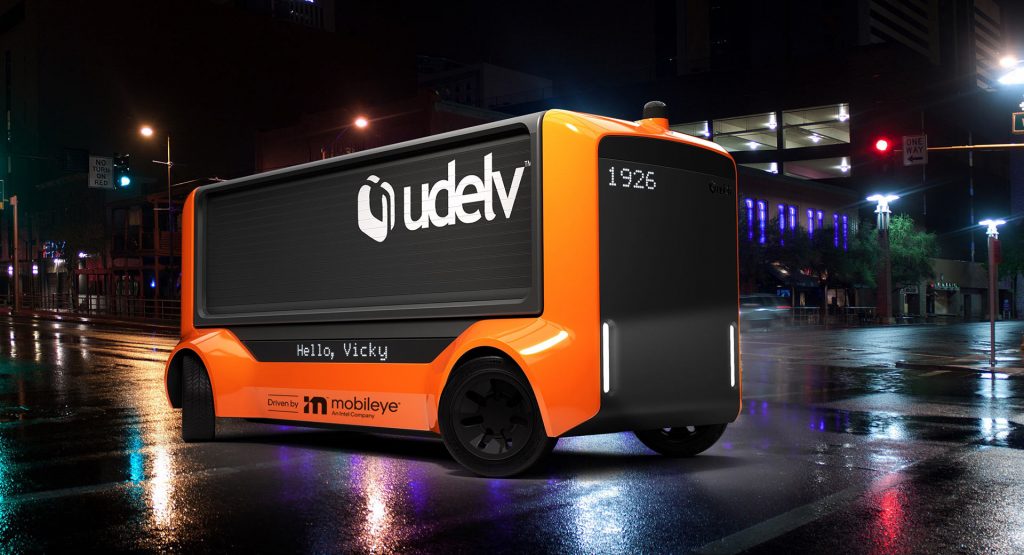Intel’s Mobileye subsidiary and autonomous vehicle delivery company Udelv will roll out no less than 35,000 fully-autonomous delivery vehicles by 2028.
The vehicle in question is fittingly dubbed ‘The Transporter’ and will be capable of Level 4 self-driving and point-to-point operation. Each of the 35,000 units to be produced will fully integrate Mobileye’s autonomous system that includes 13 cameras, three long-range LiDARs, six short-range LiDARs, and six radars. Mobileye’s system also has technology from Israeli company EyeQ and utilize the Road Experience Management (REM) crowdsourcing program that uses real-time data to build a global 3D map.
“This is a real commercial deployment,” vice president of automated vehicle standards at Mobileye Jack Weast told The Verge. “Thirty-five thousand units starting in 2023 that will fully integrate our self-driving system for commercial use for automated goods delivery.”
Read Also: Mobileye Pushing To Make Autonomous Tech Available For All
Udelv has been testing autonomous delivery vans throughout the United States for a number of years now, including in areas such as Oklahoma City, Arizona, and California’s Bay Area.
The Transporter will be built from the ground-up and based on a modular electric platform that can be tweaked to fit a variety of different vehicles. As it will be fully autonomous, it will lack a cabin for a human driver and offer support for DC fast charging. The company has confirmed that while the delivery vehicle will be fully-autonomous, it will also have ultra-low-latency teleoperation capabilities, allowing a remote operator to take control of it whenever necessary.
“Our deal with Udelv is significant for its size, scope and rapid deployment timeline, demonstrating our ability to deliver Mobileye Drive for commercial use now and in volume,” added Mobileye president and chief executive Prof. Amnon Shashua. “COVID-19 has accelerated demand for autonomous goods delivery, and we are delighted to partner with Udelv to address this demand in the near term.”






